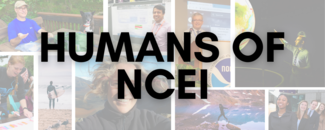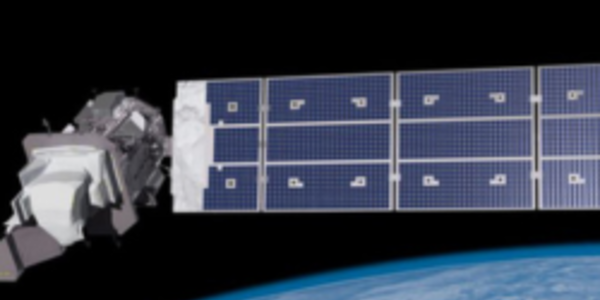
Here at NCEI, we aren’t just data—we are people. In our Humans of NCEI series, meet the awesome minds that manage one of the largest archives of atmospheric, coastal, geophysical, and oceanic research in the world. Get to know Georgianna Zelenak, a Bathymetric Data Manager who maintains data used for seafloor mapping.
What is your specific area of expertise?
I manage bathymetric data that is used for seafloor mapping.
What was your first job? How did it prepare you for your current position?
Right after college, I spent 3 months shuffling geophysical instruments to 50+ stations all across New Mexico. That job, as well as other similar field campaigns later on, gave me a deep-seated appreciation for the blood, sweat, and tears that go into collecting data. One survey’s worth of raw data in the archive probably corresponds to weeks, if not months, of hard work on the part of the scientists as well as the engineers, techs, crew, and staff who support them.
How did you end up at NCEI?
Prior to coming to NCEI, I was the science operations coordinator for a study abroad program on tall ships. As I began to settle down more, the months of travel each year became unsustainable. One day I happened to stumble across a posting for a bathymetric data manager in Colorado, and it seemed too good to be true!
What does a usual workday look like for you?
Most days start with sorting through emails and responding to customer requests for assistance accessing a dataset. Often I then coordinate with my fellow data manager to get new surveys moving through our ingest system and determine tasks for our student interns. Right now we are working on updating our decade-old ingest pipeline, so frequently I’m meeting with developers to get updates and answer any questions that have come up. On my favorite days, I get to participate in meetings with members of the seafloor mapping community all over the world!
What question are you asked most often when someone finds out what you do? How do you respond?
The most common question I hear is “You manage data from ships in Colorado?” Thanks to modern technology, it’s totally feasible to manage oceanographic data from the middle of the country!
What sort of training and education would one need for your job?
I have an undergraduate degree in Geophysical Engineering from Colorado School of Mines and a Master’s from Scripps Institution of Oceanography at UC San Diego. It’s not the formal education that prepared me for this job, though. I think the most important thing a candidate needs for a job in data stewardship is a passion for the dataset. If you care about the data that you are working with, you will be willing to learn the skills and work through the inevitable issues that come up. For me, that’s what you develop in the field rather than in the classroom.
What inspired you to pursue a career in your field?
I was the five-year-old mountain kid in Colorado who was completely obsessed with the ocean. My interest in data management developed much later, though, as I began to participate in survey after survey where the data never really seemed to go anywhere. I realized that my hard work, and the work of my peers on the ships and field crews, really lacked meaning if the data we collected didn’t make it into a publicly accessible archive. Hard drives sitting under a scientist’s desk do little to help our understanding of the world.
What projects are you working on now? Are there any upcoming projects that you are excited about?
I’m really excited to become more engaged in Crowdsourced Bathymetry! There is an ambitious goal to produce the definitive map of the world ocean floor by 2030. With only about 19% coverage last year, we have a long way to go and we need to think beyond traditional survey vessels. The former sailor and educator in me loves the idea of getting all sorts of mariners to submit depth measurements while they are engaged in routine operations.
What is your favorite aspect of your job?
I love engaging with members of the international community as we work towards a common goal of mapping the seafloor by 2030. There are so many brilliant and passionate people to learn from; it’s truly inspiring!
What challenges have you had to deal with in your career?
I spent several years trying to force myself into the theoretical side of science when my passion and skills are much more aligned with real-world applications. That created many painful points early on. Now that I’m in a field that suits me, I find that I have to carefully manage how much I take on and the balance between travel and a normal on-shore life. This work is amazing and I want to do it all!
Who are you outside of your career?
Typically, I’m a big fan of adventure and visiting new places. I’m finding myself investing more time and energy into family and making progress on our fixer-upper home.
Last country visited?
Last year, my husband and I rented a 200-year-old converted sheep barn in a small town in Ireland for a week. I highly recommend it!
*Please note that all of the information was current through the publication date.




